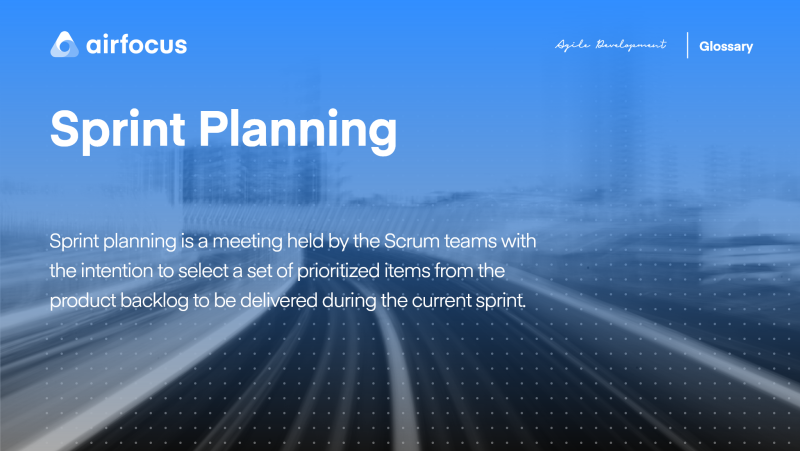Sprint Planning
What is sprint planning?
Definition of sprint planning
Sprint planning is a meeting held by the scrum teams with the intention to select a set of prioritized items from the product backlog to be delivered during the current sprint.
Essentially, the start of sprint planning indicates the start of the sprint.
The product owner, the scrum master, and the entire scrum team are required to take part in planning. To make this possible, sprint planning is a timeboxed event — it has a set length of time that all participants agree to attend.
How long sprint planning needs depends on the duration of the sprint. If the duration of the sprint is 1 week, the sprint planning should last about 2 hours. As the sprint duration increases the planning duration also increases proportionately. If the sprint lasts for 4 weeks the sprint planning should be done for 8 hours. During the sprint planning, the product owner presents a rough idea of the scrum team’s goals, including features to be added or improvements required to the existing system. Then they present the highest priority items from the product backlog.
Together, the members of the development team determine which product backlog items each of them will build and how they will resource this during the current sprint.
What spring planning is used for?
In the agile development process, sprint planning is used to accomplish the following tasks.
The product owner, scrum master, and the development team use sprint planning to discuss and select the prioritized items in the product backlog.
The development team reviews the technical aspect of each item and decides how feasible it is to develop them during the current sprint.
The development team also completes detailed planning of the backlog items, by breaking down the user stories into individual development and testing tasks.
The scrum team selects a set of tasks from the prioritized product backlog items and assigns each to a member of the development team.
The team members estimate the size of the user stories or story points using scrum estimation techniques such as planning poker. This provides an estimate for each task they have selected.
Advantages of sprint planning
Put simply: an effective sprint planning meeting gets the whole team aligned on what needs to be done, when and by whom.
More specifically, the benefits of sprint planning include:
It provides a communication platform for the development team: During the sprint planning, the team members get the opportunity to identify their dependencies, capacity to set achievable goals and plan their tasks to achieve them during the current sprint.
It helps to prioritize the deliverable: The product owner prioritizes the backlog with the most important items at the top. Then the scrum team selects the items from the prioritized backlog and breaks them down into smaller tasks. This way the most important features of the system will be delivered in early sprints.
It avoids team burnout: The team members themselves select achievable goals for the current sprint based on their capabilities and estimations. This avoids a third party, such as the project manager, setting unachievable and/or unnecessarily stressful goal posts.
Disadvantages of sprint planning
Of course, there are some watch-outs associated with sprint planning. And even with the best of intentions, the planning process can backfire:
Poor estimations can lead tasks to failure: The tasks for the current sprint are selected by the development team based on their best estimations on the workload and their capabilities. If a task is poorly defined or estimated, they might not be able to complete it during the current sprint as planned in the sprint planning session.
Sprint planning requires a good knowledge of scrum to be successful: To have a successful planning session, the team must consist of members who are well aware of the agile scrum framework. The scrum master and the product owner roles should be played by experienced, scrum certified members. And — wherever possible — the development team should possess scrum knowledge too.

General FAQ

Glossary categories
Experience the new way of doing product management

Experience the new way of doing product management








